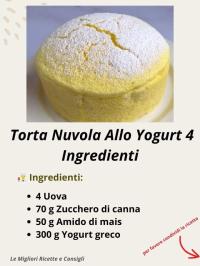Copy Link
Add to Bookmark
Report
Cider Digest #1110

Subject: Cider Digest #1110, 26 January 2004
From: cider-request@talisman.com
Cider Digest #1110 26 January 2004
Forum for Discussion of Cider Issues
Dick Dunn, Digest Janitor
Contents:
Cider Apples with High Specific Gravity ("Three Hills Farm")
Re: sweet sparkling cider (Tim Bray)
Re: Sweet cider (Michael Arighi)
Added sweeteners in cider (Andrew Lea)
Reply to "Not dry land orcharding" (James Cummins)
Send ONLY articles for the digest to cider@talisman.com.
Use cider-request@talisman.com for subscribe/unsubscribe/admin requests.
When subscribing, please include your name and a good address in the
message body unless you're sure your mailer generates them.
Archives of the Digest are available at www.talisman.com/cider
----------------------------------------------------------------------
Subject: Cider Apples with High Specific Gravity
From: "Three Hills Farm" <organic@threehillsfarm.com>
Date: Fri, 23 Jan 2004 18:37:37 -0500
Hey folks. . .
I was wondering if anyone on the list may have compiled a list in the
past of the cider apples with the highest specific gravity. I'd like to
add a few more cultivars to the orchard and am probably missing a few
great ones. What other apples are in the same high specific gravity
category as Wickson, Golden Russet, Golden Harvey, Rubinette, Parmar,
Florina & Wismer's Dessert? Any suggestions?
John A Gasbarre
Three Hills Farm
Union, Maine USA
organic@threehillsfarm.com
http://www.threehillsfarm.com/apples.html
44° 15' 45" N / 69° 19' 45" W
------------------------------
Subject: Re: sweet sparkling cider
From: Tim Bray <tbray@mcn.org>
Date: Fri, 23 Jan 2004 21:01:35 -0800
John Howard wrote:
>I've been puzzling over how to
>get a semi-sweet sparkling cider too.
Move to Normandy! :-D
> From reading the archives, following
>recent threads, and my first time experiences this winter, I gather it is
>very difficult for the home cidermaker to eliminate all active yeasts.
I'd say "all but impossible," myself. Even commercial operations can have
difficulties with this.
>I am attempting to stop one of my carboys at around 15sg. I cold racked it
>this weekend for the fifth time and it still shows signs of slight
>fermentation activity even packed in ice at 34F!
I have a jug fermenting quite well in my fridge, just barely above 32 F. I
suspect it would continue at 32 or even lower, until the liquid became a solid.
>Another carboy I've let go
>to dryness and am now racking whenever the barometric pressure hits 1030mb.
>My plan is to add sucrose at bottling time to 15sg and compare the tastes of
>the "naturally" sweet cider with the "artificially" sweetened cider.
Good luck! How are you going to age the "naturally sweet" cider, since it
probably will not stop fermenting?
I did something like that with a bone-dry and rather sharp cider (fermented
with Champagne yeast.). Adding about one part fresh juice to 2 parts cider
produced a remarkably tasty drink!
>As for sparkle, I assume that despite all my rackings a slow fermentation
>will continue in the bottle,
Yes, most likely...
>and hope to be able to control its speed
>through storage temperature.
Let us know how that goes! I'd be interested to know how cold you have to
go to get yeast to stop entirely. My experience is that you can sometimes
shock yeast by chilling it rapidly, and get it all to go dormant; but since
it's only dormant, not dead, sooner or later a few of them will wake back
up... don't wire the corks down, that way the popping will alert you. :-)
Before somebody reads off the label on a yeast packet, let me add that my
experience and reading of others' experiences confirms that yeasts are a
LOT tougher than the labs let you know about. For instance, alcohol
tolerance is WAY higher than the information might lead one to
believe. Same for temperature: sudden changes will shock them, with
potentially ruinous results in beer (which may spoil before the yeast
restarts) but in cider, you can just wait and see if they recover. And if
the temp is lowered _gradually_, the yeasts can adapt.
>Just in case I am successful in shutting down
>the yeast completely, I plan to inoculate some of the bottles with a
>commercial malolactic bacterium to see if that will give me some sparkle. I
>was wondering if anyone on the list has had success using a malolactic
>fermentation to induce sparkle in the bottle?
Sure! Works fine in a still cider if you haven't sulfited, if it gets
warm, and if you're lucky. MLF works best at warm temperatures, though, so
if there was residual sugar I think the shut-down would re-start. ;-) But
see Andrew Lea's comments on the potential for off-flavors added by the ML
culture.
Albion Works
Furniture and Accessories
For the Medievalist!
http://www.albionworks.net
http://www.albionworks.com
------------------------------
Subject: Re: Sweet cider
From: Michael Arighi <calzinman@earthlink.net>
Date: 23 Jan 2004 22:44:24 -0800
On Fri, 2004-01-23 at 14:26, John Howard wrote:
> Just in case I am successful in shutting down
> the yeast completely, I plan to inoculate some of the bottles with a
> commercial malolactic bacterium to see if that will give me some sparkle. I
> was wondering if anyone on the list has had success using a malolactic
> fermentation to induce sparkle in the bottle?
>
> John Howard
Unless I misremember, the Italian wine, Lambrusco, is done that way.
Also, I think, Lancer's "Crackling" Rose. So it should be possible. Only
things I'd worry about were keeping the SO2 level low enough not to kill
it off and the possibility of the characteristic "mousy" smell of the
malolactic fermentation.
Anybody got any further/different info?
- --
Michael Arighi <calzinman@earthlink.net>
------------------------------
Subject: Added sweeteners in cider
From: Andrew Lea <andrew_lea@compuserve.com>
Date: Sat, 24 Jan 2004 16:02:36 +0000
Just to pick up on a few related postings....
Michael Arighi wrote:
>
> most artificial sweetners are not all that stable in storage in
> alcoholic and fairly acid environments.
>
Well, only kinda. From a UK perspective, the permitted sweeteners in
cider are saccharin (which is probably stable in cider for a zillion
years), acesulfame, sucralose and aspartame. Only aspartame gives
serious stability problems, and hydrolyses readily at cider pH (say 3.5)
after just a few weeks or months. So it's not used. The others are
stable for all practical purposes for the shelflife of the cider AFAIK
(let's say a year or so).
Saccharin is cheap and has a characteristic bitter aftertaste - however,
it is widely used in UK 'traditional' cask ciders as well as in mass
market bottled cider, and is sanctioned and encouraged by CAMRA as part
and parcel of 'real cider'. No comment!
John Ray mentioned 'Stevia'. This is not permitted in the UK or the EU
on account of its doubtful toxicology (see
http://www.foodstandards.gov.uk/multimedia/webpage/stevia). I believe
it is permitted for retail sale in the USA though not as a commercial
food sweetener.
The fact of the matter is that a sweet draft cider is almost impossible
to make and protect by traditional means (no additives, no
pasteurisation) in the modern world. Indeed it is doubtful whether such
a product ever had much of a traditional existence at all. And those
that did were quite likely to become 'sick' or 'framboise' and
re-ferment violently as described in the 19th and early 20th century
literature. Or they were very high in alcohol like the so-called 'New
England' style, achieved by fortification with raisins before
fermentation and possibly with brandy afterwards.
Making a natural sweet cider in a glass bottle is somewhat easier,
because the glass keeps the air out and the carbon dioxide in, both of
which suppress continued yeast activity. And to my mind this is the most
perfect and interesting cider style you can get. I manage to make a
certain amount of it most years. But even this is difficult and can only
be achieved by the long slow cold fermentation of a low-nutrient juice
with frequent racking, as John Howard suggests.
For 'real world' situations, I personally back re-sweetening with cane
or beet sucrose followed by pasteurisation as the 'least worst' option
every time. However, this can be something of a red rag to some of the
bulls here on the right-hand side of the pond!
Andrew Lea
- --
Wittenham Hill Cider Page
http://www.cider.org.uk
------------------------------
Subject: Reply to "Not dry land orcharding"
From: James Cummins <jnc1@localnet.com>
Date: Sat, 24 Jan 2004 20:27:00 -0800
Diane is concerned with heavy loss of trees on Mark rootstock, planted
on slightly raised bed that has flattened over a few years.
The raised bed can be quite helpful, but it really must be a bit higher
than a few inches and must be maintained. It is possible that low
winter temperatures have contributed to tree mortality, but:
Most likely cause of high tree mortality is the Mark rootstock itself.
Mark appears to have excellent winter hardiness, but there is a serious
problem in root structure. Diane, if you pull up and examine some of
these dead trees, you will likely find a "carrot root" situation -- a
root system that tapers from rather thick at ground level rather
abruptly down to a point -- just like a carrot root. If you make a
vertical cut through the root just below ground level, you will probably
see very serious disruption of the vascular system -- the cambium, if
any has survived, will be erratic and incomplete, apparently caused by
expansion of burrknots or a similar set of structures. The net result
is more or less complete disruption of the phloem, so that the root
system is simply starved for the photosynthates that should be arriving
from the foliage.
You might be able to salvage at least some of the trees, if symptoms are
not too far advanced, by mounding soil and/or compost high up on the
base of the tree. The tree may generate roots from the disturbed area,
or if you pile soil high enough, the scion can take root (and don't
worry about getting too big a tree).
Another tack that will work if there is still life in the tree:
inarching. Plant 3 to 5 long liners of M.7 about a foot out from the
base of the tree, then in early June, use these to inarch-graft. If
your grafts are successful (and they should be), you'll still be in the
tree business.
Seems like a lot of work (and it is) but a 10-yr-old tree is worth some
backache to save.
Jim Cummins
jnc1@localnet.com
------------------------------
End of Cider Digest #1110
*************************



















